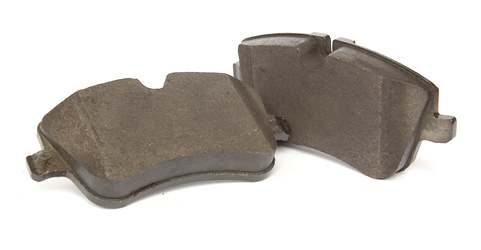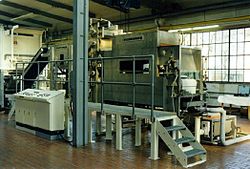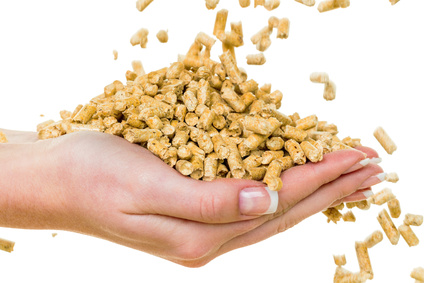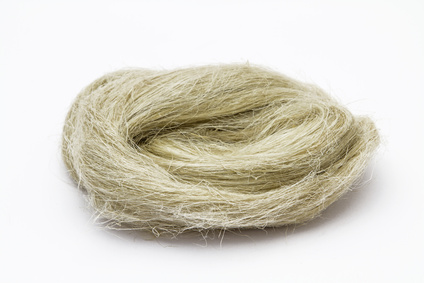Object
The intention is to introduce a technically high quality fibre (SETRALIT®), made of renewable raw materials, as an alternative to synthetic fibres and conventional natural fibres, which is of ecological and economical interest. All this is based on an increasingly favourable political environment, the rising market of fibres made of renewable raw materials, and the experience that in every mass market also high quality products are needed. The development of the natural fibre products is completed.
History
Development of SETRALIT® - fibres was initiated in 1989 by the friction lining industry after replacement of asbestos was required by law. In the years that followed ECCO managed to develop the so-called “Ultrasonic Breakdown”, a method to gain natural fibres – mainly bast fibres of annual plants like flax or hemp – of constantly pure quality. Now these fibres are commercially available. They are already applied in friction linings, and in several other applications which are technical demanding they are ready for marketing. ECCO holds patents about the ultrasound method and device as well as about several refinement and finishing steps that make the SETRALIT® - Fibre to an unique high-performance substance.

Application
The rising interest of using annual vegetables fibres is due to its good technical attributes and ecological advantages.
Generally the fibre fractions of these plant are being marketed, but there also are applications for the other elements which often are seen as waste (mainly shives, tow or hurds). Owing to its high purity the SETRALIT® - Fibre is not only able to compete with conventionally gained natural fibres, but can also replace high quality synthetic fibres like aramid in many applications. It is or can be used in various areas: friction linings, aerated concrete, insulation wall panels, fibre reinforced plastics (especially injection moulding and biopolymers) and spunlace fleeces are very attractive applications for the SETRALIT® - Fibre. Therefore the most important target markets for us is the friction lining industry, followed by construction industry, plastics, chemical and textile industry.
Production
Up to now we operated the technical plant USAN III. This machine will be completed as a pilot plant (USAN IV) with a capacity of several 100 t per year. The main plant of a later fibre factory will be USAN V with a capacity of up to 1500 t per year, shift, and line. So a future production of ultrasonically cleaned high quality natural fibre amounting to 10.000 annual tons or more appears to be quite feasible. In some further refining steps, depending on application, the SETRALIT® - Fibre will be cut, ground, fibrillated and otherwise treated.

Idea
The basic idea was to create a high quality technical fibre made of renewable raw materials and to bring it to market as an interesting alternative – ecologically as well as economically – for synthetic and for conventional natural fibres. The total worldwide potential of this market is estimated to comprise about several hundred million tons from which at least 50 million tons are domiciled in the European Union.
The Idea relies on the following
The political peripherals are favourable: ecological principles like environmental protection, medically harmlessness, recycling of products and also the careful use of short resources are more and more important for political decisions. From an economical point of view the decision for using renewable raw materials may be rising purchase prices because of short resources of raw materials and growing disposal costs for not reusable waste products. These trends won’t be reversed.
The market for fibres of renewable raw materials is continuously growing: Already several 10.000 tons of conventional flax and hemp fibres are currently being used in the German automobile industry per year. For the following years there will still be a rising demand. Certainly, there will follow an increase of technical standards, for producing and processing of these fibres. Therefore we expect other industries (plastic, construction, and others) to make the decision for using natural fibres, too. A long time realistic prognosis is that natural fibres may occupy about 5 to 10 % of the market share. The potential turnover only for the European Community can be of some billion Euros per year.
In every mass market there is a demand of technical high quality products: in the automobile sector and other areas mainly low-priced and technically low demanding products are used. However, these fibre qualities are commonly contaminated by inherited fibre constituents like glues and dyestuffs, and therefore can’t be used in many high quality materials (like for example plastic injeciton moulding, aerated concrete, emulsion paints, and gaskets). There will be a special market where the customer is willing to pay a higher price for high quality and fully developed natural fibres. This will promise good profits. The ECCO GROUP has been representing this concept for years in the area of high-performance lubricants.
Resulting from these considerations we created the idea of a new product: Producing a high-tech-fibre, which is holding the technical potential but not the failings of a high-performance synthetic fibre (ecological questionable, high price, and more). The ECCO took the development to an end and now has begun to place this product into the emerging market. Every percent of this niche of the plant fibre market will promise a turnover of about 50 million Euro. It is certainly not utopian to talk about a market share of 10% of the main market for plant fibres.

Background
Because of long-lasting business contacts in the friction lining industry the ECCO GROUP was asked at end of the eighties to develop an alternative for asbestos fibres which still were used up to that time in Germany, but then banned by law. To solve this problem, ECCO turned to natural fibres, especially bast fibres like flax, hemp, jute, kenaf, ramie, and others. Their outstanding technical properties were known by the long human history of using those fibres, and have been rediscovered just shortly before. Their utilisation was a niche which was not occupied yet by the big fibre manufacturers. Another point was the increasing public interest in renewable and biodegradable raw materials. In the year 1990 a project started together with all great German friction lining manufacturers (Rütgers Pagid, Jurid, Textar, Ferodo Beral and later Raybestos), and was supported by the German Federal Ministry for Research and Technology (BMFT).

During the process of development it showed that flax is a natural fibre well suited for use in industry. Therefore many patents for the technical utilisation of flax originated nationally and internationally. Conditions for using plant fibres in industry are:
It turned out that the ultrasonic break-down method is an adequate procedure to avoid the common dew retting of plant fibres (traditional treatment in agriculture) or water retting which is not allowed in Germany. The time span between harvest and fibre production is reduced from several weeks only to a few days. Moreover the ultrasonic method provides new fibre types highly qualified for tasks which so far could only be solved by synthetic fibres. Those fibres are fine industrial raw materials, and SETRALIT® is their trademark registered by ECCO. So the ECCO ultrasonic break-down provides the platform for using plant fibres in high performance industrial applications.
After development the method has been technically optimised and characteristics of the new fibre have been worked out. Testing and adjusting the method to all kinds of peripheral parameters cost a few years time and considerable financial resources. The breakthrough finally was an essential improvement of method, meaning a decreased ultrasonic treatment time of from 2 min. down to less than 30 sec. Ultrasonic break-down is therefore an effective as well as economic method because of the relatively low production costs and the almost unlimited capability to upscale it without any major changes of its technology.